YOUR GUIDE TO ASPHALT AND SOIL COMPACTION EQUIPMENT
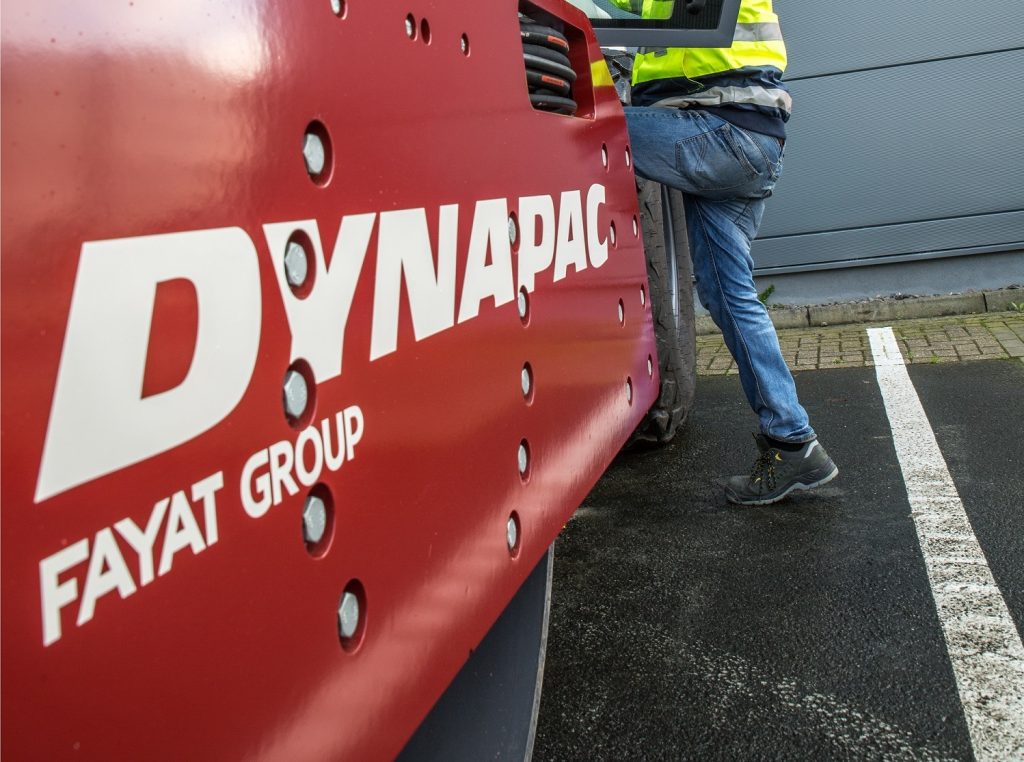
Compaction of asphalt and soil is a necessary step in any construction process. Meeting the compaction targets set out in the design brief will ensure longevity and optimal performance of the construction project whether it be a major highway, a land subdivision or a residential/commercial construction site. To achieve compaction targets within cost and on time there are two main ranges of compaction machines available: light compaction and heavy compaction.
Light Compaction
Light compaction equipment is generally a hand operated piece of machinery, they are designed to be light and nimble allowing for easy transport and operation in areas that cannot be accessed by larger equipment. Light compaction equipment needs to not only be light and nimble but it must be safe, easy to use, reliable and most importantly supply strong compaction efficiency in a small package. Light compaction equipment can be used by landscape gardeners, DIY renovators, councils, plumbers, electricians, road construction and maintenance crews on projects with varying size and complexity. Upright Rammers, vibrating plate compactors and trench rollers are all types of light compaction equipment.
Upright Rammers
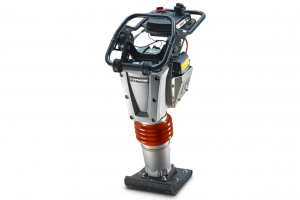
High centrifugal force and speed contribute to deep and effective compaction. The slim design facilitates easier handling especially when close to walls, posts or in narrow trenches. Rammers are versatile compaction tools developed for work on cohesive and granular soils, e.g. for repair and improvements to trenches, ditches, backfills and foundations. We recommend buying rammers that are easy to handle in every stage of operation and reliable in all conditions regardless of when and how often they are used. Features facilitating low operator fatigue are also very important such as perfect balance and low vibration handles.
Vibratory Plate Compactors
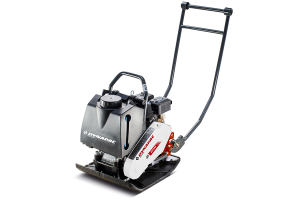
Vibrating plate compactors are available as either forward or reversing plates. Forward plates can be used in both granular soils and asphalt applications depending on the specification and options fitted. They are perfect for repair and maintenance work and can be used on driveways, pathways and car parks, they offer great compaction performance on thinner layers of material. Reversible plates are used on medium and thick layers of granular soils from sand up to rock fill. Look for plate compactors that offer reduced hand and arm vibration and drive belt reliability is also key for uptime.
Duplex and Trench Rollers
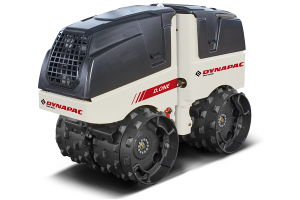
Duplex rollers work on thin layers of granular soil and asphalt, their sizing makes them very versatile and can be used on small and large projects. They shine in confined areas with low overhead clearance and are a great compliment or even alternative to a ride on double drum roller. Trench rollers are ideal for high risk work sites with tight corners, obstacles or steep slopes. Trench rollers need to be able to handle the toughest of cohesive materials including clays and silts. When it comes to these rollers go for compact models that allow you to work easily in tight spaces.
Heavy Compaction
Smooth Single Drum Vibratory Rollers
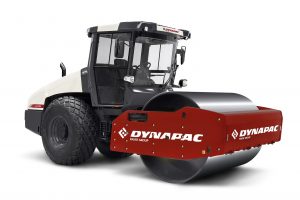
Single drum vibratory rollers are ideal for compacting all types of granular soil (the larger rollers can be used for rock fill compaction). These rollers are suitable for most types of construction work including: airfields, dam construction, harbour projects, road construction/maintenance works and commercial construction. When deciding on a single drum roller to buy, look at specs such as static linear load, frequency and amplitude as compaction efficiency and performance is very important. Operator comfort is also a vital point to consider, as rollers are frequently operated in reverse ensure the operator’s station is designed to reduce fatigue and stress on the operator’s body by way of rotating seat and operators consoles.
Padfoot Single Drum Vibratory Rollers
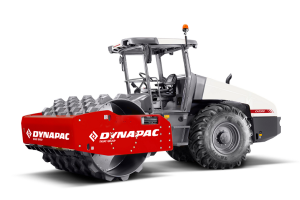
Padfoot rollers are a specially designed version of vibratory rollers used for compacting cohesive soils such as heavy clays or silt. The design of the pad drum is very important as it plays a large part in massaging air and water voids out of the material allowing compaction targets to be reached, they are also vital to allow extra traction to avoid issues in slippery conditions. When deciding on a single drum roller to buy, look at specs such as static linear load, frequency and amplitude as compaction efficiency and performance is very important. Operator comfort is also a vital point to consider, as rollers are frequently operated in reverse ensure the operator’s station is designed to reduce fatigue and stress on the operator’s body by way of rotating seat and operators consoles.
Asphalt Double Drum Vibratory Rollers
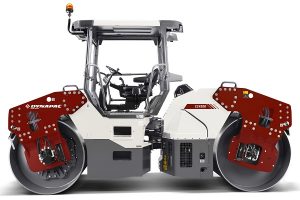
Double drum vibratory rollers are optimised for compaction of asphalt. Large machines come equipped with dual amplitude and all models have high vibration frequencies to ensure optimal compaction is reached efficiently. When selecting a roller consider the options available e.g. edge press devices, drum offsets and grit spreaders as you may require these functions for your project. Also ensure the machine has excellent visibility not only in the forward and reverse directions but also down to the drum edges, this visibility can be increased by the inclusion of operators seats that not only swivel but also slide, in addition asymmetric operators stations allowing better visibility down to the edges of your work this ensures there is no accidental damage of curbs and gutters.
Asphalt Combination Rollers
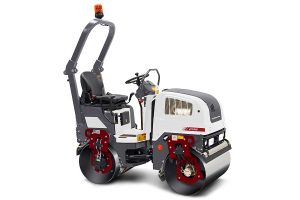
Asphalt combination rollers are equipped with four rubber tyres at the read instead of a drum. The rubber wheels are driven in pairs by separate propulsion motors, thus minimising the risk of damaging newly laid asphalt when making sharp turns. The rubber tyres are used to massage the stones on the surface layer of asphalt closer together to ensure a denser and smoother surface texture on the asphalt. Combination machines are also ideal for spray seal applications were both vibration compaction and surface texture can be achieved with one machine. Ensure the rear tyres have suitable scraper and sprinkler systems to ensure asphalt doesn’t pick up.
Pneumatic Rollers
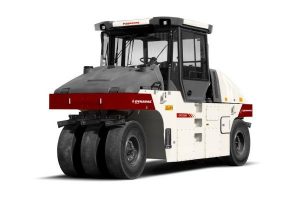
Pneumatic rollers are very versatile machines used not only on asphalt materials but due to their heavy weight they are also just as suitable on granular soils. The rubber tyres are used to massage the stones on the surface layer of asphalt closer together to ensure a denser and smoother surface texture on the asphalt. When deciding on a machine consider how flexible the operating weight of the machine is, ensure it has an easy to use flexible ballast system. Also consider if an air on the run system would suite your needs allowing ground contact pressures to be adjusted on the go!
Steel Drum Static Rollers
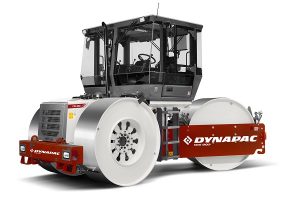
Steel drum static rollers are used in areas where the ground cannot be vibrated but high compaction efficiency is still required such as: in close proximity to high rise buildings and on bridge decks. Ensure the machine comes standard with scrapers and sprinkler systems so that it can be operated on both asphalt and granular soils. Static machines rely on static linear load for compaction performance so ensure you take close note of this spec when comparing options. An easy to use flexible ballast system is also a bonus to allow varied ground contact pressures depending on project specifications.
Tamping Compactor
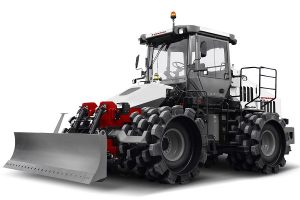
Tamping compactors are used on cohesive and semi-cohesive soils. These machines are ideal for use on large volume earthworks like highways, dams and airport runways. The tamping compaction effect relies on high operating speed amplifying the pressure applied by the drums. When choosing a machine, ensure it comes with a good quality transmission and be sure to compare the maximum working speeds in both directions when comparing possible options.
